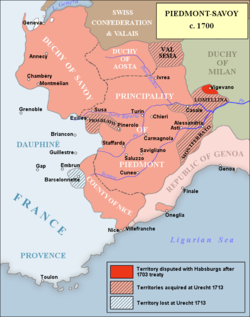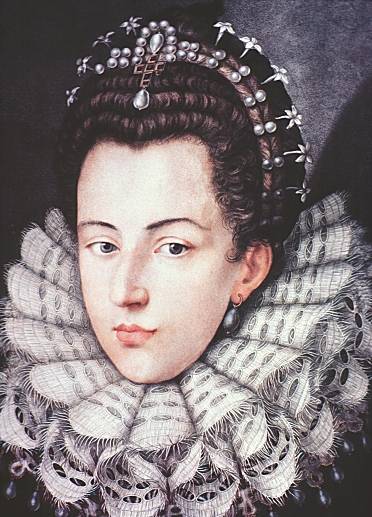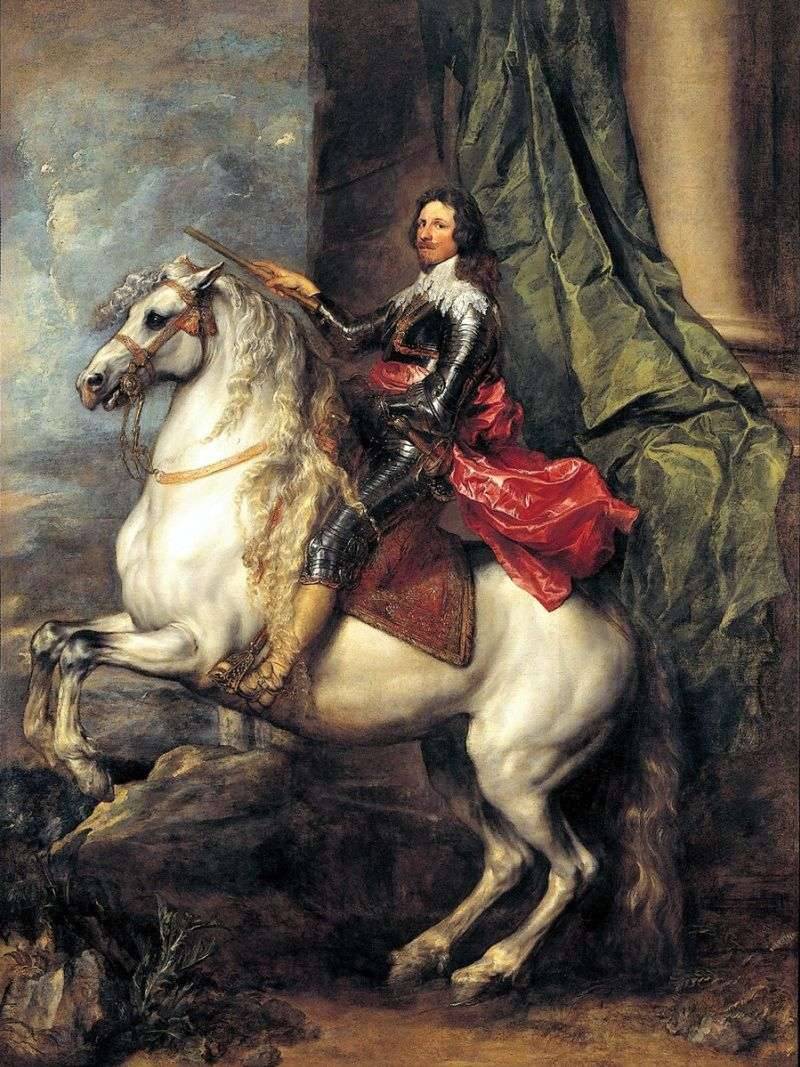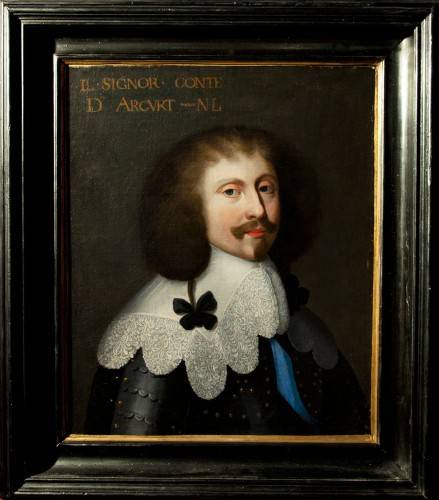another cardinal. End of career

In 1638, Cardinal La Valetta and his brother had to go to sunny Italy. It is known that the cardinal himself had no desire to leave Picardy - and had every reason for such unwillingness. First, because Italy was considered a secondary theater of operations. Initially, Cardinal Richelieu expected that the allies would fight first of all - the Dukes of Savoy, Parma and Mantua. Even when these hopes did not come true, reinforcements were sent there according to the residual principle - only after the peck of a roasted rooster and in insufficient quantities.
It is no less important that the political situation in Italy itself and around it has worsened. In the Swiss Valtellina, the Grison Protestants, not having received the promised money (in 1636 in Paris there was no time for them), went over to the side of Spain, in the spring of 1637 raised an anti-French uprising and forced the army of the Duke of Roan to leave for Germany. (True, the Spaniards were Catholics, but, as you know, money does not smell and has no religious affiliation). Actually, Cardinal Richelieu himself was to blame for this, not controlling the transfer of funds. But his Eminence will not admit his own mistakes. Roan was appointed guilty, and he, correctly assessing the situation, decided not to return to France and joined Prince Bernhard, who was besieging the Breisach fortress in Germany. In 1635-1636, the Duke of Roan not only controlled the Valtellina Valley and threatened the Duchy of Milan from the north, but also sent reinforcements to the French army in Italy. Now this threat to the Spaniards has completely disappeared.
Moreover, it became possible to repeat the situation of 1634. Then the Cardinal Infante with a large army (17 thousand people) left Milan, passed through Switzerland and turned off the classic Spanish road to the east. Having passed through the Austrian Tyrol, he went to Bavaria, where he joined up with the allies from the HRE at the right time, and together they defeated the Swedish and German Protestants at Nördlingen. After a short rest, the army passed through Germany and arrived in the Spanish Netherlands. The whole trip took 4 months.
In Italy itself, the situation was no better. The defeated Duke of Parma concluded a peace treaty with Spain in 1637. And in the fall, almost simultaneously, the allies of France died - the Dukes of Mantua and Savoy. Power passed to their widows as regents for their young sons. The Duchess of Mantua was of Spanish origin, so the French did not have to expect anything good from her. Prior to this, the devastated Duchy of Mantua could not provide significant assistance to France, but the Duchess tried to do something nasty right away. Even before the arrival of the cardinal, a conspiracy was uncovered with her active participation in order to transfer the fortress of Casale in Montferrat (this is the east of Savoy, not even Mantua itself) into the hands of the Spaniards. The fortress of Casale was one of the two most important and well-fortified in northern Italy, the other was Pinerolo in the west of Piedmont. The Italian officers of the conspirators were arrested, and the French garrison settled in the fortress, which took more than 2 thousand people from the small French army.

Map of the Duchy of Savoy, however, of a later period. It can be seen that the duchy consists of several parts: Savoy proper, Piedmont and a number of smaller areas, incl. newly acquired Montferrat
The situation in Savoy was more complex and confusing. The widow of Duke Victor Amadeus I, Christina, was the sister of King Louis XIII. Nevertheless, she did not feel like a Frenchwoman, she envied her sister queens and dreamed of becoming one herself. And, icing on the cake, she hated Cardinal Richelieu fiercely. Therefore, she tried in every possible way to show her independence from France and tried to pursue a policy of neutrality, for which Italian historians praise her very much. But this is a typical afterthought, because then Christina French, aka Madame Reale, simply did not know what she was doing. At the same time, French historians characterize it as

Christina French
Under these conditions, the governor of the Duchy of Milan, Marquis Leganes, decided that it was now possible to go on the offensive, especially since the so-called. arrived from America. The Indian fleet, which brought back enough gold to allow Leganes to repay the debt to the Lombard army (or at least part of the debt). In 1635, the French built the fortress of Vercelli in Piedmont (the central part of Savoy) and captured the fortress of Breme in Lombardy, not far from the western border of the same Piedmont. Now, that is, in the spring of 1638, the Marquis Leganes decided to take them away. He started with Breme, a fairly strong fortress with a numerous garrison. The commander of the French army, Marshal de Créquy, attempted to lift the siege, but was killed by an accidental shot on 17 March. Just a week later, the French garrison capitulated. For the hasty surrender of the fortress, the commandant was sentenced to death, but, of course, the situation in Savoy did not improve from this. To replace de Kreki, Cardinal la Valette was sent.
On May 6, the cardinal arrived in Savoy. But instead of going with the army to meet the Spaniards, he had to negotiate with Christina of Savoy to extend the military alliance. Madame Reale bargained desperately, not wanting to call a spade a spade - that the alliance was directed against Spain. By the way, the Marquis Leganes also made interesting proposals to the Duchess, but by definition he could offer her less so as not to offend her allies - her brothers-in-law. Richelieu also tried to negotiate with Prince Tommaso, but he went over to the side of the French much later, when their victory became obvious. Be that as it may, the treaty was signed only on 6 June.
Meanwhile, the Marquis Leganes did not wait for the end of the negotiations and on May 26 began the siege of Vercelli. According to the blog, his army (the so-called army of Lombardy) consisted of 16 thousand infantrymen and 6 thousand cavalry. The French army, according to the same Spanish blog, consisted of 12 thousand infantry and 4 thousand cavalry, plus a garrison of 4 thousand people. In fact, if the data on the Spanish army is confirmed by other sources, then the French ones look very overestimated. During the years 1638-1639, the French rarely had an army in Italy of more than 10 thousand people, of which half was required for garrisons. According to the memoirs of Cardinal la Valetta (p. 34), the French army, which came out on June 9, 1638 to help Vercelli, consisted of only 5 thousand infantrymen and 3 thousand cavalry.
Perhaps the author of the blog had in mind the joint strength along with the army of Savoy (although the author himself speaks exclusively of the French). But the problem was that the cardinal could not order anything to the Savoys, only to persuade, and their loyalty, as subsequent events showed, was a big question. As for the garrison, then, according to Italian data, he was only 1700 people from the Savoyard army. True, the same source counted as many as 30 thousand Spaniards - it’s not for nothing that they say that fear has big eyes.
When the Franco-Savoy army arrived at Vercelli, the allies discovered that two lines of fortifications were built around the fortress, in full accordance with the then rules of siege warfare. The inner one is against sorties from the fortress, and the outer one is against the deblocking army. The first thing the arrived army managed to do was to send reinforcements of 2000 people to the besieged city (June 19). Cardinal Richelieu wrote to his colleague on 2 July:
But that's where the success ended. Further, I freely quote the book of A. Bazin “History France under Louis 13th":
On July 6, after a 40-day siege, Marquis Dogliani, governor of the city, led 3500 men, including the sick and wounded, from their weapons, luggage and 3 guns to the location of the French army. Of course, Spanish, Italian and French sources assess this capitulation differently. The Spanish consider it a direct result of the wise leadership of the Marquis Leganes. Italian - as an honorable surrender after heroic resistance due to lack of gunpowder and food. The French, on the other hand, believe that the Italians still had the opportunity to resist, doubt the lack of gunpowder and suggest that the governor sympathized with Christina's opponents.
All of this is true to some extent. Leganes competently led the siege, the Spaniards occupied all the bridgeheads and had already stormed the main city wall. The lack of gunpowder does raise some doubts, but it was still impossible to verify this. Perhaps the commandant decided that he had done quite enough for the defense (more than many of his French colleagues) and would stop being a hero, otherwise they would kill him, what good. Moreover, he knew that the Spaniards brought a few more mines to the city walls.
Be that as it may, the loss of Vercelli was a serious blow to the reputation of la Valetta. And the Marquis Leganes, who was not distinguished by a penchant for self-criticism, reported to King Philip IV about the victory:
In fact, this victory was loud, but not decisive. Then the marquis left the garrison in the city and returned to Montferrat.

Don Diego Mejia de Guzman y Davila, Marquis of Legañes
Until the next 1639, there were no serious hostilities in Northern Italy. True, the French victory at Felizzano on October 7 is mentioned, but even French sources only briefly mention it. Therefore, in the winter of 1638-1639, the de facto ruler of Spain, the Count-Duke of Olivares, demanded that Leganes send 6 veterans by sea to Catalonia for a new attack on French Provence. The Marquis Leganes did not even think of carrying out this order, but there must have been some reason for such arbitrariness. Therefore, the appearance of Prince Tommaso in the Duchy of Milan at the beginning of 1639 was very useful for him. And his brother, Cardinal Mauricio, appeared even earlier in Genoa, which was actually a Spanish protectorate. There was another circumstance, sad for Christina of France, but strengthening the claims of her brother-in-law - in October her eldest son died. The late duke appointed her regent only for the eldest son, not a word was said about the younger. Therefore, now the brothers demanded the transfer of the regency into their own hands, especially since the emperor of the HRE, the formal lord of the duchy, also announced this.

Prince Tommaso Francesco di Carignano
At the end of March 1639, the Marquis Leganes launched an offensive against Montferrat, and the army of prince Tommaso, reinforced by part of the Spanish army, entered the territory of Piedmont. The real collapse began. Some cities - Chieri, Moncalieri, Ivrea, Verrois - surrendered without a fight, others, like Crescentino and Chivaso (the latter - just a few kilometers from Turin) - after a short resistance. Christina found herself without an army, and the French were too few so that they could fight in several places at once, and even keep garrisons. On March 26, La Valette tried to lift the siege of the Spaniards from the Chencio castle between Alessandria and Asti, and, according to French sources, there were only 8 thousand French against 20 thousand Spaniards. The battle had been going on for several hours when the cardinal received a letter with a tearful request to Madame Reale to drop everything and hurry to Turin, since Prince Tommaso was only 6 hours away from Turin. On March 28, the cardinal was already in Turin. But in reality, Tommaso began the siege only on April 17, and it was more like a reconnaissance in battle. Convinced that the garrison was strong enough, on April 25 he lifted the siege and withdrew. However, he managed to establish contact with his supporters in the city, which turned out too late.
Meanwhile, the situation of the French in Savoy continued to deteriorate. In early June, the Spaniards took several more fortresses: Moncalvo, Pondesture and Trino. All this time, la Valette received almost no reinforcements. After Vercelli, for example, Cardinal Richelieu promised to send 3 regiments to Italy: Mirpois, Cayus and Roussillon. In the most detailed memoirs of la Valetta, only Cayus and Roussillon appear, and the number of the latter is only 210 people. Why Richelieu left his friend in this position is difficult to say.
On the one hand, during the war there are never extra troops. In 1638-1639, France had as many defeats as victories (if not more), and many of them cost a lot of blood. For example, the two-month siege of Saint-Omer in Flanders in the summer of 1638 cost the French army 4 killed and wounded (and probably about 2 prisoners) and ended in a humiliating defeat. A little later, the siege of the city of Fuentarabia (in the Basque country) on the Mediterranean coast ended with even greater embarrassment. It turned out almost a mirror image of the victory at Leucate a year earlier. But now the beaten besiegers were the French, their losses were about the same as at St. Omer. But there were fewer Spaniards, and the French were supported by the fleet. However, the French army suffered its worst defeat at Thionville in Luxembourg in June 1639. The dementia and courage of Marshal de Fequiere led to the fact that 6 thousand people were killed or wounded and 3 thousand were captured - in fact, his entire army. To this must be added unrest in France itself - for example, in order to suppress the uprising of the Barefoot in Normandy, 5 thousand people had to be recalled from the Picardy army.
But there was another side of the coin. Christina French, despite her deplorable condition, did not want to make concessions, which, as expected, angered her brother and Cardinal Richelieu. By June 1639, she was knocked out of her consent to the deployment of French garrisons in several Savoyard cities, but she did not want to establish a French protectorate over the duchy until her son came of age (that is, as everyone perfectly understood, forever) and she did not want to move her son to France and hear. So sending in reinforcements was just as much a pressure tool as bribery.
In mid-June, La Valette decided to recapture the city of Chivasso. His entire army numbered 6,5 thousand people against 14 thousand for Leganes and Prince Tommaso. But just at that time, another French army of the Duke de Longueville approached the city, about which it was said only that it was small. On July 17 the battle took place; it is not known whether the army of Longueville participated in it or only had a moral impact, but the Spaniards retreated. After that, La Valette proceeded to lay siege to the city and 10 days later achieved surrender. But almost immediately after the battle, the armies split up. Longueville left to liberate Saluzzo, shortly before this captured by the army of Cardinal Mauricio, and la Valette remained in the vicinity of Turin to observe Prince Tommaso.
The denouement came on the night of July 27. Prince Tommaso, at the head of an army of 10-13 thousand people, approached the walls of Turin, and his supporters in the city opened the gates for him. Madame Reale and her son had to flee to the citadel of the city, and, as her enemies claimed, in one nightgown. Together with her, the citadel was occupied by 2 thousand French soldiers. Attempts to drive the Spaniards and Principists out of the city failed, as the townspeople quickly erected barricades in the streets.
A few days later, the cardinal managed to get the duchess out of the city, and then out of Savoy. On the way, she had to hear from the Savoys, who met her carriage, a lot of new things about herself. At the same time, the Duke of Longueville was summoned to Germany, and la Valette was left alone to salvage the remains of the shipwreck, as Cardinal Richelieu put it. They meant the fortress of Casale and the cities in the west of Savoy. Otherwise, there were gloomy prospects for the loss of all the achievements of the War of the Mantua Succession, the transformation of Savoy into a hostile state and a springboard for an attack on France.
The method used by la Valette at first aroused considerable surprise in Cardinal Richelieu - he concluded a truce with the Spaniards from August 14 to October 24. It is not known who was the initiator and what were the specific conditions - according to some sources, la Valette promised to withdraw troops from the citadel (in the end this did not happen), according to others, it was only about maintaining the status quo. Both sides were going to use the truce to their advantage. The Spaniards wanted to fortify themselves in the captured fortresses, and la Valette was simply waiting for reinforcements.
But did not wait. On September 12, he had his first attack of fever, on September 16, the cardinal could no longer write anything, then his condition only worsened, partly due to doctors who prescribed him some laxatives, some bloodletting. The then medicine could kill a completely healthy person, and the cardinal was very weakened - both physically and mentally. Here is what his secretary Jacques Talon (1598–1671) wrote about his state of health in 1639:
The cardinal did not belong to the number of aristocrats for whom the war was something like chess with living pieces. He took military failures hard and did not try to justify himself by doing his best. As Comrade said. Stalin in similar cases: "We do not limit you, do the impossible!". As for his family affairs, everything was also sad there. On February 11, his elder brother Henri died of a fever in his arms. He was also pressured by the trial of another brother, Bernard. The latter was made the scapegoat for the defeat at Fuentarabia. The commander was then the Prince of Condé, fleet the Archbishop de Sourdi was in command, while Bernard d'Epernon was Condé's deputy. At the same time, both Conde himself and de Sourdi, for personal reasons, hated the entire Epernon family. Most likely, Bernard d'Epernon was also responsible for the defeat, but he was certainly not the only one. It was necessary to start with Richelieu himself, who made up such a strange team. But the cardinal did not blame himself, there were no complaints against de Surdi either (they appeared later), and Conde was a prince of the blood and therefore almost beyond jurisdiction. Perhaps Cardinal La Valette was really sure of his brother's guilt, as Richelieu wrote:
But it is assumed that he also warned his brother about the impending process, after which he safely fled to England. Moreover, the old Duke d'Epernon continued to oppose, and la Valette constantly had to convince Richelieu not to pay attention to him - the old man simply does not understand what he is doing.
On September 18, La Valette asks to write a letter to Cardinal Richelieu asking him to send a new commander, since he himself is unlikely to recover. Richelieu urgently sent another doctor, who arrived on September 22, but apparently it was already too late. On the morning of September 27, in full consciousness, Cardinal La Valette died. He was not even 48 years old.
To complete the story of the war in Savoy, we can add that d'Harcourt, who arrived in October 1639, managed to turn the tide. But in addition to his talented head, he also brought reinforcements: according to some sources, 7 thousand people, according to others - 7 thousand infantry and 2,3 thousand cavalry (despite the fact that the entire French army in Savoy at that time was 9 thousand people). And in March 1640, another 8 thousand arrived. Even with these reinforcements, the French army was one and a half to two times inferior to the Spanish in numbers. But still, with such forces it was possible to fight on an equal footing, which d'Harcourt brilliantly demonstrated. But his Piedmontese campaign is another matter.

Count Henri d'Harcourt
In the winter of 1640-1641. revolutions began in Portugal and Catalonia, Olivares was not up to Savoy, and the Marquis Leganes was recalled to Spain. Under these conditions, the prince brothers preferred to make peace with Christina, who returned to Turin in 1642 and continued to rule for many more years and even after her son came of age.
Information